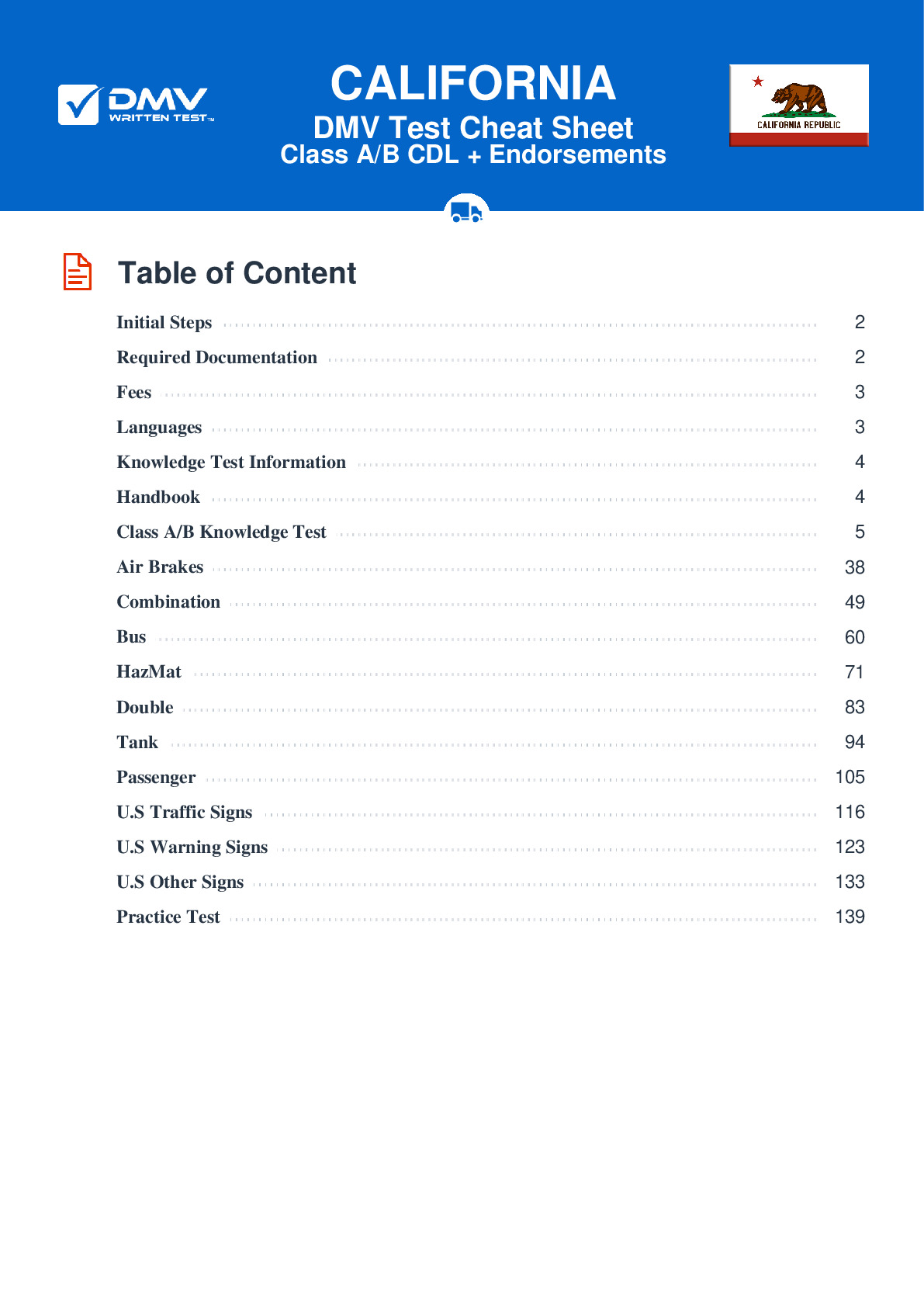Combination
All applicants who are applying for a Class A CDL should be prepared to take the Combination test. This test covers information found in Section 6 of the California Commercial Driver Handbook. Section 6 provides the information needed to safely operate tractor-trailers, doubles, triples, and straight trucks with trailers. The test is made up of 20 multiple-choice questions, and applicants will need to correctly answer a minimum of 17 questions to pass. The Combination test is not a replacement for the Double/Triple endorsement test.
Number of Question
Passing Score
1. Trailers with low underneath clearance may be difficult to drive:
Explanation
Railroad-highway crossings may be difficult to cross when pulling a trailer with a low underneath clearance. In particular, both low-slung units and single-axle tractors pulling long trailers are especially challenging to drive over raised crossings.
2. After connecting the air lines to the trailer while coupling, you should:
Explanation
Correctly following the steps to couple and uncouple trailers is vital to safely operating a combination vehicle. After connecting the air lines to the trailer while coupling, you should supply air to the trailer.
3. When entering or crossing traffic while driving a combination vehicle, it is especially important that you:
Explanation
Combination vehicles require more space on the road than other vehicles. When entering or crossing traffic while driving a combination vehicle, it is especially important that there is a large enough gap in traffic for you to safely do so.
4. Trailers built before 1975 are:
Explanation
Trailers built before 1975 are not required to have spring brakes. When parking a trailer without spring brakes, be sure to use wheel chocks to prevent the trailer from rolling.
5. Test the tractor protection valve by:
Explanation
You should test the tractor protection valve by allowing the air supply to properly charge, turning off the engine, then releasing air from the system by pressing the brake pedal several times. The tractor protection valve should move into its emergency position when psi drops to an unsafe level.
6. If an air supply control is in its "emergency" position:
Explanation
Tractor protection controls in older vehicles may be operated by levers instead of knobs. If an air supply control is set in its "emergency" position, the air supply will be stopped and the trailer emergency brakes will be applied.
7. Avoid needing to make sudden lane changes by:
Explanation




